I. Introduction
A. Brief Overview of the Housing Situation in Kenya
Kenya, a nation brimming with vibrant culture, breathtaking landscapes, and a burgeoning economy, faces a significant challenge: housing affordability. As of 2021, Kenya’s urban areas have been grappling with a growing population and an acute shortage of affordable housing. Rapid urbanization has led to the proliferation of informal settlements, exacerbating housing problems and living conditions for many Kenyan families. This housing crisis demands innovative solutions and cost-effective designs to provide secure and comfortable homes for all citizens.
B. Importance of Affordable Housing in Kenya
Affordable housing stands at the core of a thriving society. It isn’t merely a roof over one’s head but a catalyst for social stability, economic growth, and improved well-being. Access to affordable housing empowers individuals, reduces poverty, and stimulates local economies. In Kenya, this issue is especially pressing, as a considerable portion of the population struggles to find housing options that align with their financial capabilities.
C. Purpose of the Article: To Explore Cheap House Designs in Kenya
This article aims to delve into the realm of affordable housing in Kenya, shedding light on innovative and cost-effective house designs that can help bridge the gap between dreams of homeownership and the reality of budget constraints. We will explore various types of affordable house designs, factors influencing their affordability, and provide practical tips for individuals and families looking to embark on their homeownership journey. By the end of this article, readers will gain insights into how they can achieve their dream of owning a home without breaking the bank.
II. Understanding the Need for Affordable Housing
A. Statistics on Housing Affordability in Kenya
To grasp the magnitude of the affordable housing crisis in Kenya, one needs to look at the statistics. According to data from the National Housing Corporation, approximately 61% of urban Kenyan households live in slums or informal settlements, lacking access to basic amenities and living in overcrowded conditions. Additionally, the World Bank reports that Kenya faces an annual housing demand of approximately 250,000 units, while the supply barely reaches 50,000 units, resulting in an ever-widening housing deficit.
Related post: Why the Design and Build Concept is Ideal for Private Developers
B. Challenges Faced by Low and Middle-Income Kenyans in Accessing Housing
For low and middle-income Kenyans, accessing housing remains a formidable challenge. Several factors contribute to this dilemma, including:
- High Land and Construction Costs: Land prices in urban areas are exorbitant, and construction materials are expensive, making it unaffordable for many to build or buy a home.
- Limited Access to Financing: Most Kenyans lack access to affordable mortgage financing, forcing them to rely on their meager savings to acquire property.
- Inadequate Infrastructure: Many informal settlements lack basic infrastructure such as water, sanitation, and electricity, rendering them unsuitable for habitation.
- Rapid Urbanization: The influx of people into urban areas has outpaced the development of affordable housing options, leading to overcrowding and the proliferation of slums.
Related post: Exploring the Charm and Functionality of 4 Bedroom Bungalow House Plans
C. The Role of Cheap House Designs in Addressing This Issue
Amidst these challenges, cheap house designs emerge as a beacon of hope. They play a pivotal role in addressing the housing crisis by offering cost-effective solutions that cater to the financial constraints of low and middle-income individuals and families. These designs emphasize efficiency, affordability, and sustainability, making homeownership an attainable goal for a broader segment of the population.
In the following sections of this article, we will explore various types of affordable house designs that are changing the landscape of housing in Kenya, offering hope to those in search of a place to call their own.
III. Factors Influencing Affordable House Designs
A. Location Considerations
When it comes to affordable house designs in Kenya, the location is a crucial factor. Selecting the right location can significantly impact the overall affordability of a home. Here’s why:
- Land Costs: Land prices vary widely across different regions of Kenya. Choosing a location with more affordable land can make a substantial difference in the overall cost of the house.
- Infrastructure Accessibility: Access to essential infrastructure like roads, water, and electricity can affect construction costs. Building in areas with existing infrastructure can be more cost-effective than developing in remote or underserved locations.
- Proximity to Urban Centers: While urban living has its advantages, it often comes with higher land and construction costs. Consider suburban or peri-urban areas where land and living costs are typically lower.
B. Size and Layout of the House
The size and layout of a house have a direct impact on its affordability:
- Compact Designs: Smaller homes are generally more affordable to build and maintain. Embracing compact designs without compromising functionality can significantly reduce construction costs.
- Efficient Space Utilization: Optimal use of available space is essential. Consider open floor plans, multi-purpose rooms, and minimal hallways to maximize usable square footage.
- Prioritizing Necessities: Focus on essential spaces like bedrooms, bathrooms, and the kitchen while minimizing unnecessary rooms or features that can inflate costs.
C. Building Materials and Construction Techniques
Selecting the right building materials and construction techniques is pivotal in designing affordable homes:
- Cost-Effective Materials: Choose locally available, cost-effective building materials such as stabilized soil blocks or alternative roofing materials like iron sheets to reduce expenses.
- Prefab and Modular Construction: Prefabricated and modular construction methods can save both time and money. They involve the assembly of pre-made components, which can be more efficient and cost-effective than traditional on-site construction.
- Labour Efficiency: Skilled labor is a significant cost in construction. Efficient project management and the use of technology can help streamline labor costs.
D. Energy Efficiency and Sustainability
Affordable house designs in Kenya can also benefit from energy-efficient and sustainable features:
- Energy-Efficient Design: Incorporating passive solar design, proper insulation, and energy-efficient appliances can reduce long-term energy costs for homeowners.
- Rainwater Harvesting: Implementing rainwater harvesting systems can provide a sustainable source of water, reducing reliance on costly municipal water supply.
- Solar Power: Utilizing solar panels for electricity generation can cut utility bills and provide a sustainable energy source, especially in regions with abundant sunlight.
In the subsequent sections of this article, we will delve deeper into specific types of affordable house designs in Kenya, highlighting how these factors are applied in practice to create cost-effective and sustainable housing solutions.
Related post: Designing the Future: 5-Storey Buildings in Kenya
III. Factors Influencing Affordable House Designs
A. Location Considerations
When it comes to affordable house designs in Kenya, the location is a crucial factor. Selecting the right location can significantly impact the overall affordability of a home. Here’s why:
- Land Costs: Land prices vary widely across different regions of Kenya. Choosing a location with more affordable land can make a substantial difference in the overall cost of the house.
- Infrastructure Accessibility: Access to essential infrastructure like roads, water, and electricity can affect construction costs. Building in areas with existing infrastructure can be more cost-effective than developing in remote or underserved locations.
- Proximity to Urban Centers: While urban living has its advantages, it often comes with higher land and construction costs. Consider suburban or peri-urban areas where land and living costs are typically lower.
B. Size and Layout of the House
The size and layout of a house have a direct impact on its affordability:
- Compact Designs: Smaller homes are generally more affordable to build and maintain. Embracing compact designs without compromising functionality can significantly reduce construction costs.
- Efficient Space Utilization: Optimal use of available space is essential. Consider open floor plans, multi-purpose rooms, and minimal hallways to maximize usable square footage.
- Prioritizing Necessities: Focus on essential spaces like bedrooms, bathrooms, and the kitchen while minimizing unnecessary rooms or features that can inflate costs.
C. Building Materials and Construction Techniques
Selecting the right building materials and construction techniques is pivotal in designing affordable homes:
- Cost-Effective Materials: Choose locally available, cost-effective building materials such as stabilized soil blocks or alternative roofing materials like iron sheets to reduce expenses.
- Prefab and Modular Construction: Prefabricated and modular construction methods can save both time and money. They involve the assembly of pre-made components, which can be more efficient and cost-effective than traditional on-site construction.
- Labour Efficiency: Skilled labor is a significant cost in construction. Efficient project management and the use of technology can help streamline labor costs.
D. Energy Efficiency and Sustainability
Affordable house designs in Kenya can also benefit from energy-efficient and sustainable features:
- Energy-Efficient Design: Incorporating passive solar design, proper insulation, and energy-efficient appliances can reduce long-term energy costs for homeowners.
- Rainwater Harvesting: Implementing rainwater harvesting systems can provide a sustainable source of water, reducing reliance on costly municipal water supply.
- Solar Power: Utilizing solar panels for electricity generation can cut utility bills and provide a sustainable energy source, especially in regions with abundant sunlight.
In the subsequent sections of this article, we will delve deeper into specific types of affordable house designs in Kenya, highlighting how these factors are applied in practice to create cost-effective and sustainable housing solutions.
V. Types of Cheap House Designs in Kenya A. Bungalow-style homes 1. Advantages and disadvantages 2. Cost-saving features and design tips B. Small apartment units
Related Post:13 steps on how to find a good Construction Company in Kenya
V. Types of Cheap House Designs in Kenya
A. Bungalow-Style Homes
Bungalow-style homes have long been a popular choice for affordable housing in Kenya. They offer a single-story layout that is not only cost-effective to build but also well-suited for various family sizes and needs.
1. Advantages and Disadvantages
Advantages:
- Affordability: Bungalows typically require less land and fewer materials than multi-story homes, reducing construction costs.
- Accessibility: Single-story designs are accessible to individuals with mobility challenges, making them suitable for all age groups.
- Energy Efficiency: With a smaller footprint, bungalows are often easier to heat and cool, leading to lower energy bills.
Disadvantages:
- Limited Space: Bungalows may have less square footage compared to multi-story homes, which can be a limitation for larger families or those needing more space.
- Land Requirement: Bungalow designs may require larger plots of land to accommodate the single-story layout, which could be a constraint in some urban areas.
2. Cost-Saving Features and Design Tips
To maximize affordability when designing a bungalow-style home:
- Optimize Space: Efficient space utilization is key. Open floor plans and multi-functional rooms can make the most of limited square footage.
- Simple Roof Design: A straightforward roof design, such as a gable roof, is cost-effective and easier to maintain.
- Local Materials: Use locally sourced and cost-effective construction materials, like stabilized soil blocks, for walls. This reduces material transportation costs.
- Natural Ventilation: Design the house to encourage natural ventilation, reducing the need for expensive mechanical cooling systems.
B. Small Apartment Units
In densely populated urban areas, small apartment units are becoming an increasingly popular option for affordable housing in Kenya. These units offer a vertical living solution that maximizes land use efficiency.
Small apartment units come with their own set of advantages and considerations:
Advantages:
- Cost Efficiency: Apartment buildings can accommodate multiple units on a single plot, spreading construction costs over several households, which can make each unit more affordable.
- Urban Living: Small apartments are often located in urban centers, providing easy access to amenities, employment opportunities, and transportation.
- Security: Many apartment buildings have security features like gated access, guards, and surveillance, enhancing safety for residents.
Considerations:
- Space Constraints: Small apartments may have limited living space, which can be challenging for families with children or those who need more room.
- Privacy: Living in close proximity to neighbors can impact privacy, so careful design considerations are necessary.
- Maintenance Costs: Common areas and shared facilities in apartment buildings may require maintenance fees, which should be factored into the overall cost.
In the subsequent sections of this article, we will delve deeper into specific design strategies for bungalow-style homes and small apartment units, offering practical insights on how to make these affordable housing options a reality in Kenya.
1. Benefits of Compact Living Spaces
Compact living spaces, such as small apartments or tiny homes, offer numerous advantages, especially in densely populated urban areas like Nairobi and Mombasa:
- Cost-Effective: Smaller homes are generally more affordable to build and maintain. Lower construction costs, reduced utility bills, and less maintenance contribute to long-term financial savings.
- Sustainability: Compact living encourages efficient use of resources. Smaller homes require fewer building materials, less energy for heating and cooling, and generate fewer carbon emissions, promoting environmental sustainability.
- Minimalist Lifestyle: Compact living spaces encourage a simplified lifestyle with less clutter. This can lead to reduced stress and a greater focus on experiences rather than material possessions.
- Urban Living: Compact homes are often located in urban centers, providing easy access to jobs, public transportation, and a wide range of amenities and entertainment options.
- Community Building: In apartment complexes or tiny home communities, residents often form close-knit communities, fostering social connections and support networks.
2. Innovative Apartment Design Ideas
Innovative design is key to making the most of small apartment units in Kenya:
- Convertible Furniture: Multi-purpose furniture items like sofa beds, folding tables, and wall-mounted desks can maximize functionality without taking up excess space.
- Vertical Storage: Utilize wall space for shelves, cabinets, and hanging storage to keep clutter at bay and create an organized living environment.
- Open Floor Plans: Open layouts can make small apartments feel more spacious. Removing unnecessary walls and partitions can enhance the sense of openness and flow.
- Natural Light: Incorporate large windows and mirrors to bring in natural light and create an illusion of larger space.
- Space-Saving Appliances: Opt for compact, energy-efficient appliances to save space in the kitchen and reduce energy consumption.
C. Prefabricated and Modular Homes
Prefabricated and modular homes are gaining traction in Kenya due to their efficiency and cost-effectiveness.
1. Overview of Prefab Technology
Prefab technology involves constructing building components or entire modules off-site in a controlled factory environment, then assembling them on-site. Key advantages include:
- Cost Savings: Factory production reduces material waste and labor costs, making prefab homes more affordable.
- Speed of Construction: Prefabricated components can be manufactured concurrently with site preparation, leading to faster construction timelines.
- Quality Control: Precise manufacturing processes and quality checks in a controlled environment ensure high construction quality.
- Customization: Prefab homes can be customized to meet specific design preferences and functional requirements.
Related Post: Designing Multi-Story Buildings in Kenya: A Comprehensive Guide
2. Examples of Affordable Prefab Designs
Several affordable prefab housing designs are suitable for the Kenyan market:
- Stabilized Soil Block Houses: These homes use locally sourced soil blocks as construction materials, reducing costs while promoting sustainability.
- Container Homes: Shipping containers can be repurposed into comfortable living spaces, offering a unique and cost-effective housing solution.
- Panelized Systems: Wall and roof panels manufactured off-site can be assembled quickly on-site, reducing labor costs and construction time.
- Kit Homes: These kits include pre-cut and pre-fabricated components that are assembled on-site. They are often cost-effective and customizable.
In Kenya, prefab and modular homes are revolutionizing the affordable housing sector, providing innovative and accessible housing solutions for a growing population. In the next sections of this article, we will delve deeper into the practicalities of implementing prefab technology and showcase examples of affordable prefab designs that are transforming the housing landscape in Kenya.
V. Design Tips for Affordable Homes
A. Maximizing Space and Functionality
When it comes to designing affordable homes in Kenya, making the most of available space is essential. Here are two key design tips that can help achieve this goal:
1. Open Floor Plans
Open floor plans have become increasingly popular for affordable homes in Kenya due to their ability to create the illusion of more space and enhance functionality. Here’s how they can be beneficial:
- Enhanced Visual Space: Removing walls and partitions between the kitchen, living, and dining areas can create a sense of openness, making the home appear larger than it is.
- Improved Natural Light: Open layouts often allow for better natural light penetration throughout the living spaces, reducing the need for artificial lighting during the day.
- Flexible Use of Space: An open floor plan provides flexibility in arranging furniture and defining spaces as needed. This adaptability is especially valuable for small homes.
- Social Connectivity: Open layouts encourage social interactions among family members and guests, fostering a sense of togetherness.
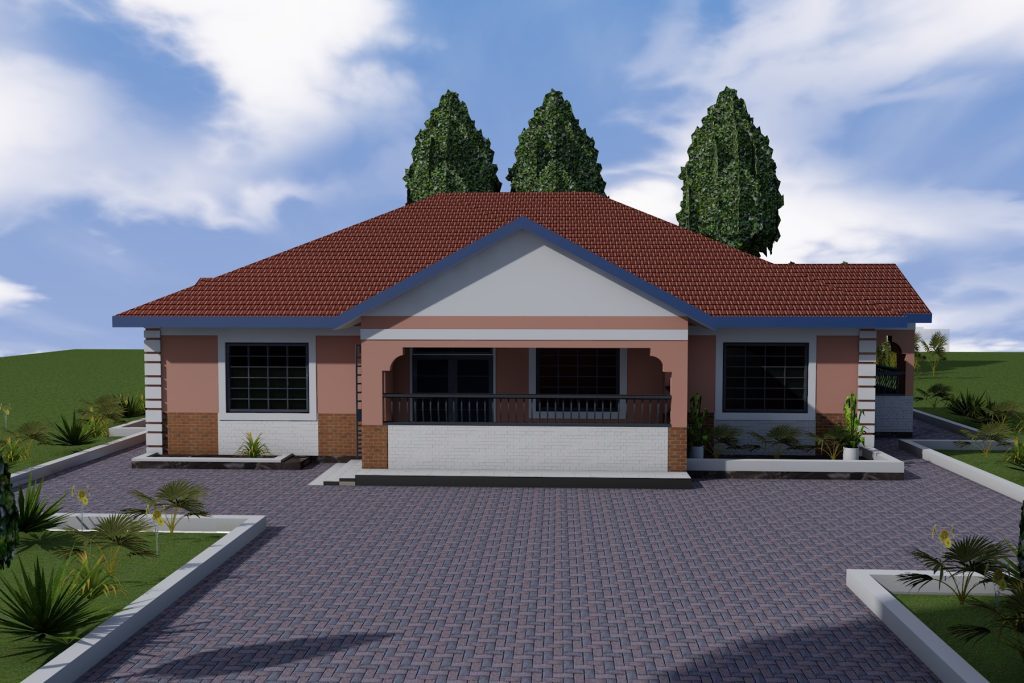
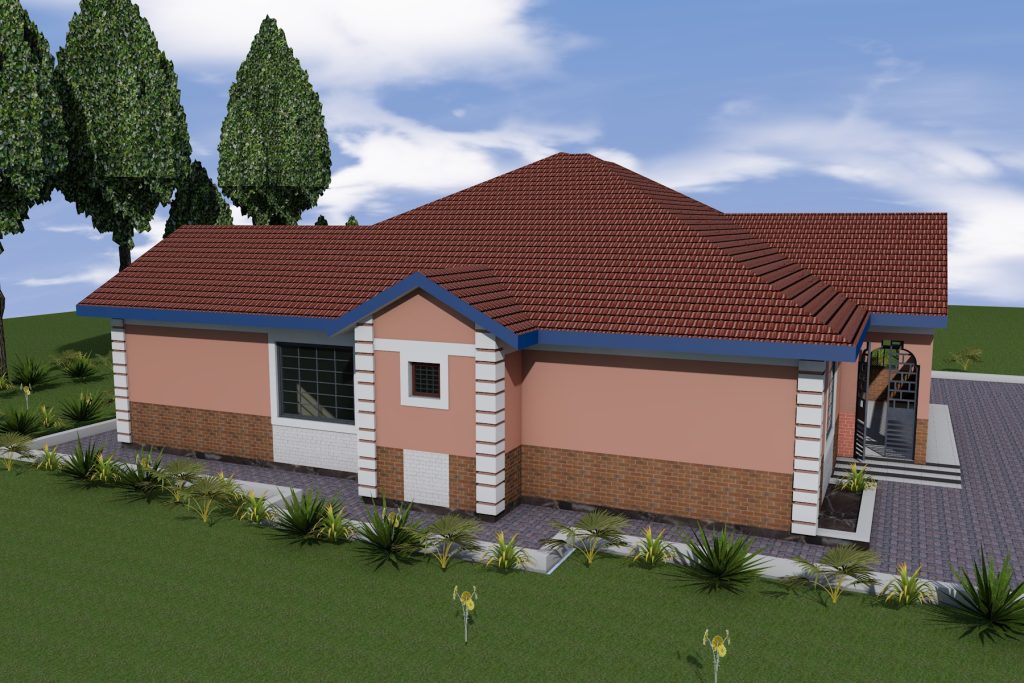
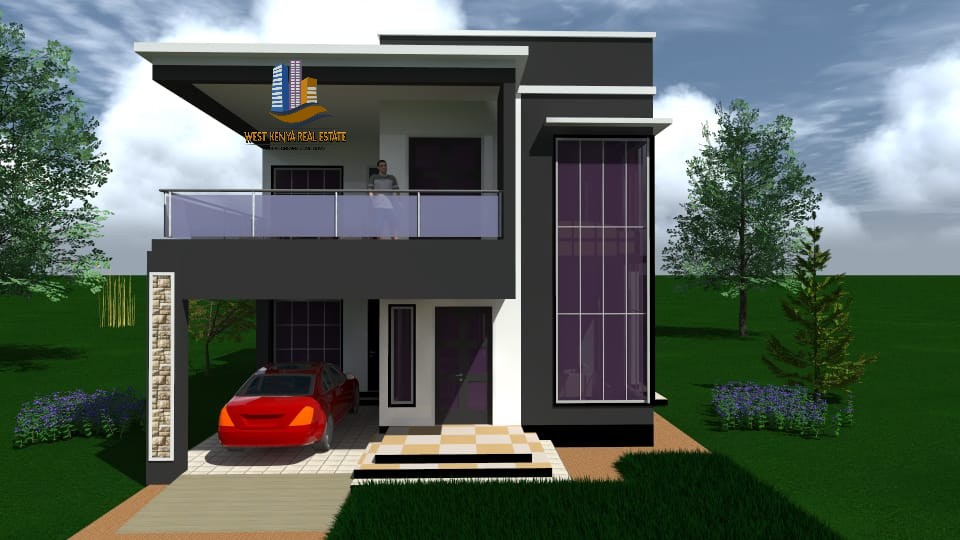

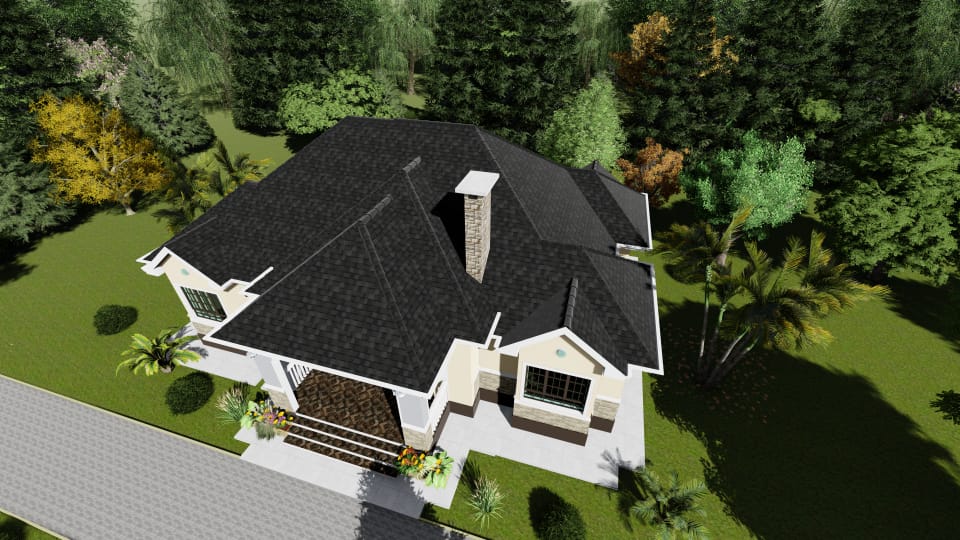

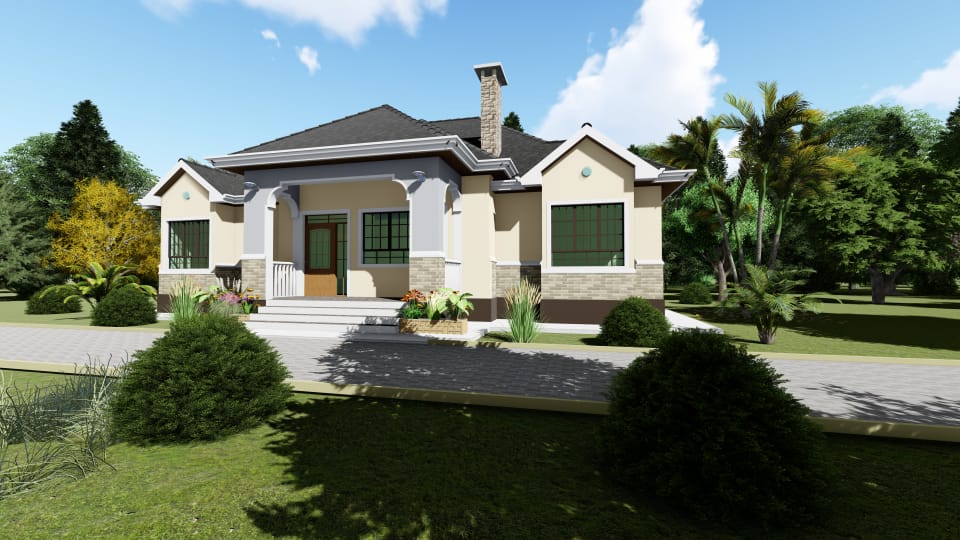
2. Multifunctional Furniture
In affordable home designs, furniture choices play a significant role in optimizing space and functionality:
- Sofa Beds: A sofa that can be converted into a bed is a great space-saving solution for small living rooms or guest bedrooms.
- Folding Tables: Foldable dining tables or wall-mounted tables can save space when not in use and expand when needed for meals or work.
- Storage Ottomans: Ottomans with hidden storage compartments provide additional seating and a place to hide away clutter.
- Modular Furniture: Modular furniture pieces can be rearranged and customized to suit various purposes, adapting to changing needs.
- Bunk Beds with Storage: In bedrooms shared by children, bunk beds with built-in storage drawers can maximize space and keep toys and clothes organized.
These design tips not only make affordable homes more efficient but also create a comfortable living environment that optimally serves the needs of the occupants. By implementing open floor plans and selecting multifunctional furniture, homeowners can make the most of their space without compromising on functionality or aesthetics, ultimately contributing to the success of affordable housing solutions in Kenya.
B. Cost-Effective Building Materials
When aiming for affordable home construction in Kenya, selecting the right building materials is crucial. Here are two cost-effective options to consider:
1. Alternative Materials like Stabilized Soil Blocks
Stabilized soil blocks, or ISSBs (Interlocking Stabilized Soil Blocks), have gained popularity in Kenya for their cost-effectiveness and sustainability:
- Local Availability: The raw materials for ISSBs, such as soil, sand, and cement, are readily available locally, reducing transportation costs.
- Lower Costs: ISSBs require less cement than traditional bricks, making them an economical choice for wall construction.
- Eco-Friendly: ISSBs are eco-friendly and contribute to soil conservation, as they use a mix of soil and cement rather than depleting forests for wood fuel.
- Thermal Insulation: ISSBs have excellent thermal properties, helping to regulate indoor temperatures, which is beneficial for energy efficiency.
Related post: Understanding the Average Cost of Building a 4-Bedroom House in Kenya
2. Sustainable Options for Roofing and Flooring
When it comes to roofing and flooring, there are sustainable and cost-effective choices available:
- Metal Roofing: Corrugated metal roofing is durable, affordable, and reflects heat, reducing indoor temperatures in hot climates. It’s also resistant to pests and fire.
- Concrete Flooring: Concrete floors are durable and easy to maintain. They can be finished with affordable and sustainable options like polished concrete or stained concrete.
- Bamboo Flooring: Bamboo is a rapidly renewable resource that can be used for flooring. It’s durable and adds a touch of natural beauty to the interior.
- Recycled Materials: Consider recycled or reclaimed materials for flooring and roofing, such as reclaimed wood or metal.
C. Energy-Efficient Design
Energy-efficient design is not only environmentally friendly but also cost-effective in the long run. Here are two energy-efficient design strategies for affordable homes:
1. Solar Panel Installations
Harnessing solar energy through photovoltaic (PV) panels can provide numerous benefits:
- Reduced Energy Costs: Solar panels can significantly lower electricity bills by generating clean, renewable energy from the sun.
- Off-Grid Options: In rural areas with limited access to the grid, solar panels can provide a reliable source of electricity.
- Environmental Impact: Solar energy reduces reliance on fossil fuels, reducing greenhouse gas emissions and contributing to a cleaner environment.
2. Passive Cooling and Heating Strategies
Passive cooling and heating strategies utilize natural elements to maintain comfortable indoor temperatures:
- Orientation: Properly orienting the home can maximize natural light and ventilation while minimizing exposure to direct sunlight, reducing cooling needs.
- Ventilation: Designing for cross-ventilation by strategically placing windows and vents can promote airflow and natural cooling.
- Insulation: Adequate insulation in walls and roofs helps regulate indoor temperatures, reducing the need for mechanical heating or cooling.
- Shading: Exterior shading elements like roof overhangs, pergolas, and awnings can block harsh sunlight and reduce indoor temperatures.
Related Post: Exploring the Costs of Architectural Drawings for House Plans in Kenya
By incorporating these cost-effective building materials and energy-efficient design strategies, affordable homes in Kenya can not only be more budget-friendly upfront but also save homeowners money on operational costs in the long term. These practices also contribute to sustainability and environmental preservation, making them a win-win solution for both homeowners and the planet.
VI. Budgeting and Financing Your Affordable Home
A. Setting a Realistic Budget
Setting a realistic budget is the crucial first step in the journey towards affordable homeownership in Kenya. Here’s how to go about it:
- Assess Your Finances: Start by evaluating your current financial situation. Calculate your income, savings, and any other sources of funding you may have.
- Determine Your Affordability: Consider your monthly expenses and debt obligations. Calculate how much of your income you can comfortably allocate to housing expenses, including mortgage payments, property taxes, insurance, and maintenance costs.
- Include All Costs: Don’t forget to account for all costs associated with home buying, such as legal fees, land acquisition costs, and construction expenses.
- Build a Contingency: It’s wise to have a contingency fund for unexpected expenses that may arise during the construction or purchase process.
- Prioritize Needs vs. Wants: Be prepared to make compromises and prioritize your needs over wants. This can help you stay within your budget.
Related Post: Crafting the Perfect Apartment Floor Plan: A Comprehensive Guide
B. Exploring Financing Options
Once you have a realistic budget in mind, you’ll need to explore financing options to turn your homeownership dream into reality. In Kenya, there are several options to consider:
1. Mortgage Loans
Mortgage loans are a common way to finance the purchase or construction of a home. Here’s what you should know:
- Shop Around: Different lenders offer varying interest rates and loan terms. Shop around to find the most favorable mortgage deal that aligns with your budget.
- Down Payment: Determine the down payment you can afford. In Kenya, a down payment of 10-20% of the home’s value is typical, but some lenders may require more.
- Loan Term: Choose a loan term that suits your financial situation. Shorter terms typically have higher monthly payments but lower total interest costs.
- Credit Score: A good credit score can help you qualify for better mortgage rates. Maintain a healthy credit history to improve your chances of securing a loan.
Related post: Exploring the Best Apartment Designs on 50×100 Plots in Kenya
2. Government Housing Programs
Kenya has various government housing programs aimed at increasing affordable housing options. These programs can provide financial support and incentives to eligible homebuyers:
- The Affordable Housing Program: Under this initiative, the Kenyan government has partnered with financial institutions to offer affordable mortgages with competitive interest rates. Check if you qualify for this program, as it can significantly reduce borrowing costs.
- Huduma Namba: The government has introduced Huduma Namba, a national identity system, which may be required for accessing certain housing benefits and programs.
- Low-Income Housing Projects: Keep an eye out for government-sponsored low-income housing projects, which may provide subsidized or affordable housing units.
- Homeownership Savings Plans: Some banks offer special savings accounts that come with attractive interest rates and are intended for those saving towards homeownership.
Exploring these financing options and government programs can help you secure the necessary funds to build or buy your affordable home in Kenya. It’s important to conduct thorough research, consult with financial experts, and make well-informed decisions to ensure that your budget aligns with your homeownership goals.
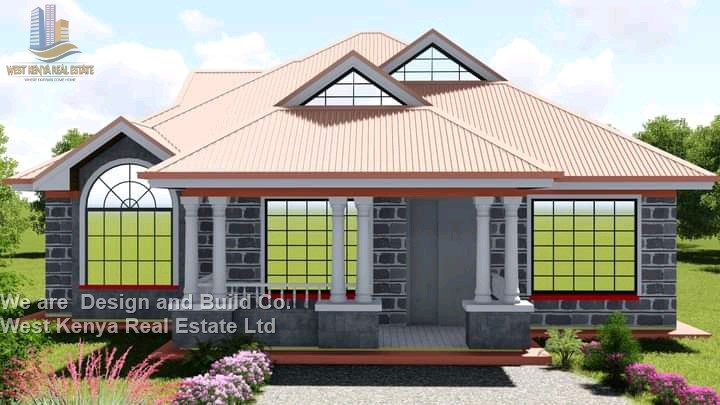
VII. Case Studies: Successful Cheap House Designs in Kenya
A. Highlighting Real-Life Examples of Affordable Housing Projects
- Flamingo Heights Estate, Nakuru: Flamingo Heights Estate is a remarkable example of an affordable housing project in Nakuru, Kenya. The development features well-designed bungalow-style homes with open floor plans, making the most of the available space. These homes are constructed using cost-effective building materials, including stabilized soil blocks. The project also incorporates energy-efficient features such as solar panels for water heating, contributing to lower utility costs for residents.
- Koto Housing Kenya: Koto Housing Kenya specializes in prefab and modular housing solutions. Their innovative designs not only offer affordability but also reduce construction time. The Koto panels used in their constructions are eco-friendly and locally produced. This approach has allowed many Kenyans to achieve their dream of homeownership more quickly and cost-effectively.
Related Post: Designing and Constructing Modern 5-Storey Commercial and Apartment Buildings: A Blueprint for Success
B. Stories of Individuals or Families Who Achieved Affordable Homeownership
- The Nyambura Family: Jane Nyambura, a single mother with two children, struggled to find affordable housing in Nairobi. With the help of government subsidies and a mortgage from a local bank, she was able to purchase a small apartment unit in a newly constructed affordable housing complex. Jane’s story highlights how homeownership programs and careful budgeting can make affordable housing a reality for single parents and small families in Kenya.
- The Omondi Family: John and Mary Omondi, a middle-income couple, realized their dream of owning a home by choosing an innovative, small bungalow design. They embraced open floor plans and multifunctional furniture, which allowed them to make the most of their limited budget. Through disciplined saving and a mortgage tailored to their needs, they were able to build a comfortable and affordable home for their growing family.
These case studies illustrate that affordable homeownership is attainable in Kenya, even for individuals and families with modest incomes. By leveraging cost-effective house designs, sustainable materials, government programs, and creative financing options, people from various backgrounds are achieving the dream of having a place they can call home. These stories serve as inspiration and demonstrate that affordable housing solutions are within reach for many Kenyan citizens.
VIII. The Future of Affordable Housing in Kenya
A. Trends and Innovations in Affordable Housing
- Sustainable Design: Sustainable and eco-friendly building practices are gaining traction in affordable housing. Innovations like rainwater harvesting, solar energy integration, and green building materials are becoming more common, reducing operational costs and environmental impact.
- Microhousing: Microhousing, characterized by compact living spaces, is becoming a trend in Kenya’s urban areas. These small units cater to the housing needs of single individuals and young professionals, offering a cost-effective alternative to traditional apartments.
- Co-Housing: Co-housing models, where multiple families share common spaces and resources, are gaining popularity. This approach reduces individual living costs and fosters a sense of community.
- Innovative Financing: Financial institutions and fintech companies are introducing innovative financing solutions tailored to affordable housing needs. These include rent-to-own programs, low-interest loans, and digital platforms for crowdfunding and savings towards homeownership.
B. Government Initiatives and Policies
- Affordable Housing Program: The Kenyan government’s Affordable Housing Program continues to be a significant driver of affordable housing. It aims to facilitate the construction of affordable homes through partnerships with financial institutions and developers, making homeownership more accessible.
- Urban Renewal: Government-led urban renewal projects are transforming informal settlements into planned communities with better housing, infrastructure, and amenities. These initiatives aim to improve living conditions for residents while maintaining affordability.
- Land Reforms: Land reforms and digitization efforts are making it easier for Kenyans to access land titles and formalize land ownership, reducing land-related disputes and facilitating affordable housing development.
- Regulatory Reforms: The government is streamlining the regulatory framework for affordable housing projects, making it easier for developers to secure permits and approvals, thereby reducing construction costs and timelines.
C. Role of Technology in Making Cheap House Designs More Accessible
Technology is poised to play a pivotal role in the accessibility of affordable house designs in Kenya:
- Prefab and 3D Printing: Prefabrication techniques and 3D printing technology are making construction faster and more cost-effective. These methods reduce material waste, labor costs, and the overall construction timeline.
- Digital Platforms: Online platforms and mobile apps are facilitating the design, financing, and purchase of affordable homes. These platforms provide information, connect buyers with developers, and offer tools for budgeting and planning.
- Blockchain for Land Titles: Blockchain technology is being explored to improve land ownership records, reducing fraud and enhancing transparency in land transactions, which is critical for affordable housing initiatives.
- Energy Efficiency Solutions: Smart home technology and energy-efficient appliances are becoming more affordable and accessible, helping residents reduce energy costs in their homes.
The future of affordable housing in Kenya is promising, with a focus on sustainability, innovation, and collaboration between the government, private sector, and technology providers. As the country continues to urbanize and address its housing challenges, these trends and initiatives will contribute to the growth of affordable housing options and improved living conditions for its citizens.
IX. Conclusion
A. Recap of the Importance of Affordable Housing in Kenya
In Kenya, the quest for affordable housing is not just a matter of shelter; it’s a journey toward achieving economic stability, social progress, and environmental sustainability. The staggering housing deficit, coupled with rapid urbanization, underscores the urgency of addressing this issue. Affordable housing in Kenya is not merely a roof over one’s head; it is a catalyst for reducing poverty, stimulating local economies, and improving the overall well-being of its citizens.
B. Encouragement for Individuals and Developers to Explore Cheap House Designs
For individuals and developers alike, the pursuit of affordable housing is an opportunity to reshape the housing landscape in Kenya. It’s a call to explore innovative, cost-effective house designs that are sustainable and accessible to a broader population. Whether through embracing open floor plans, utilizing stabilized soil blocks, or harnessing the power of technology, there are myriad ways to make affordable housing a reality.
C. Final Thoughts on the Potential Impact of Affordable Housing on Communities in Kenya
The impact of affordable housing extends beyond individual households; it reverberates through entire communities. When more Kenyans have access to safe and affordable homes, communities thrive. They become hubs of social connectivity, economic growth, and environmental stewardship.
Affordable housing fosters social stability, reduces inequality, and enhances the quality of life for all residents. It empowers individuals and families to break free from the cycle of poverty and provides a solid foundation upon which future generations can build their dreams.
As Kenya continues its journey toward affordable housing, let us remember that this endeavor is not just about bricks and mortar; it’s about building a brighter, more equitable future for the entire nation. With concerted efforts, innovation, and a commitment to the well-being of all citizens, affordable housing will play a pivotal role in shaping Kenya’s prosperous tomorrow.

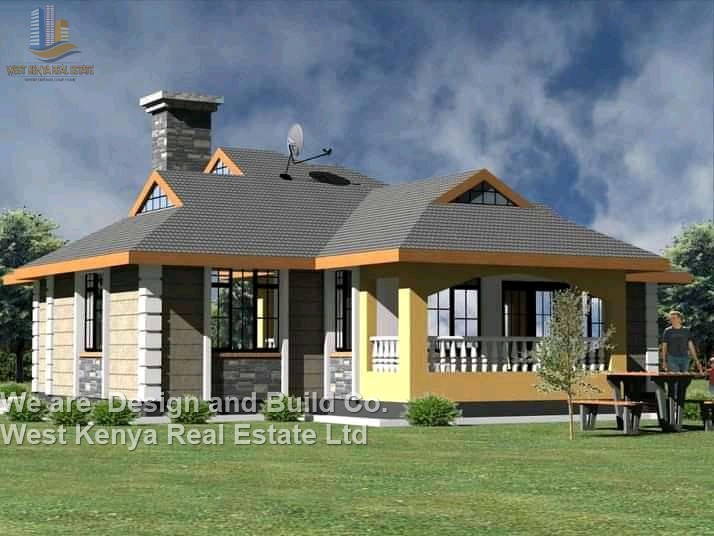

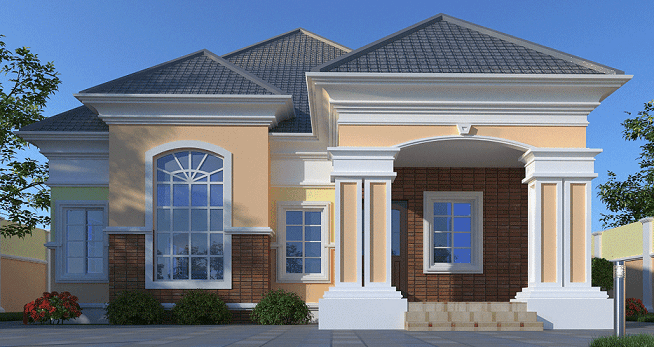

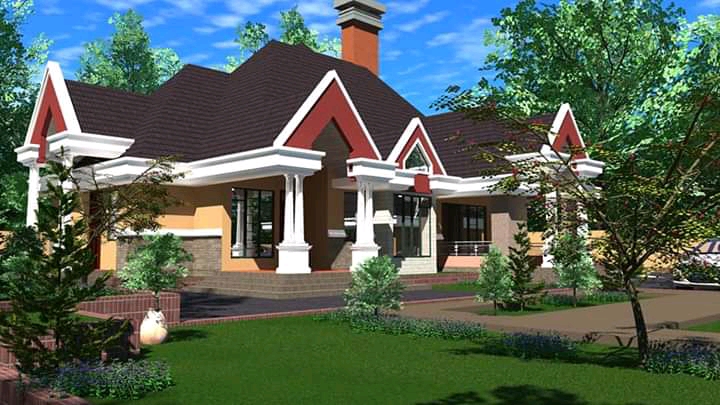
6 thoughts on “Affordable House Designs in Kenya: Paving the Path to Home ownership”